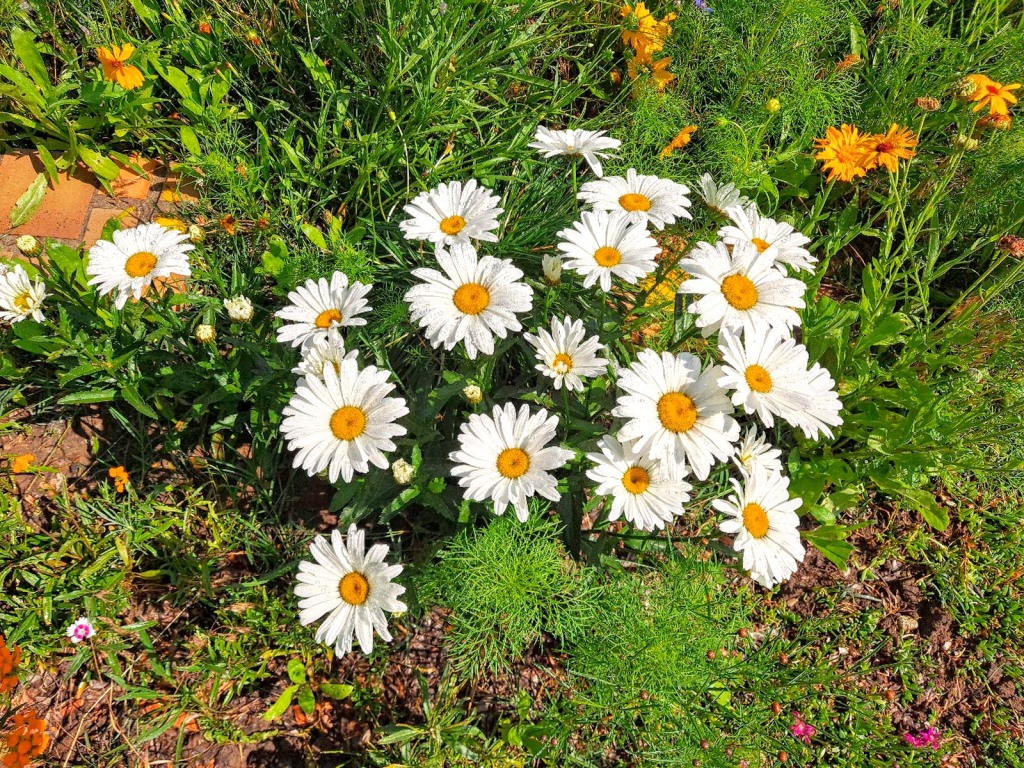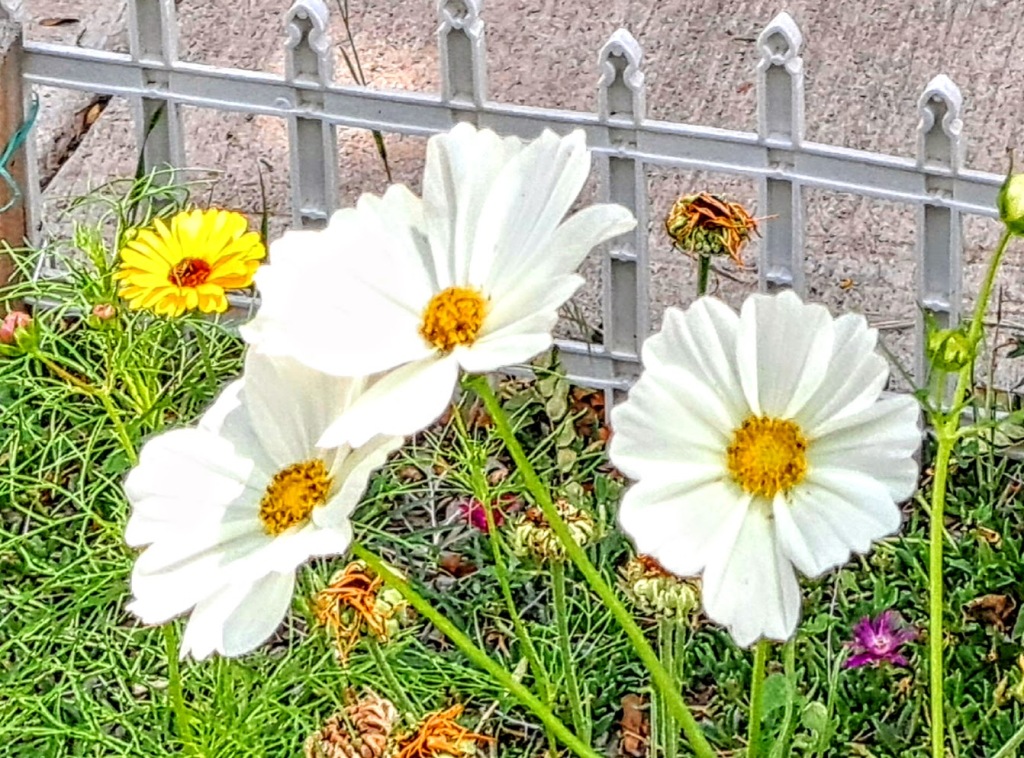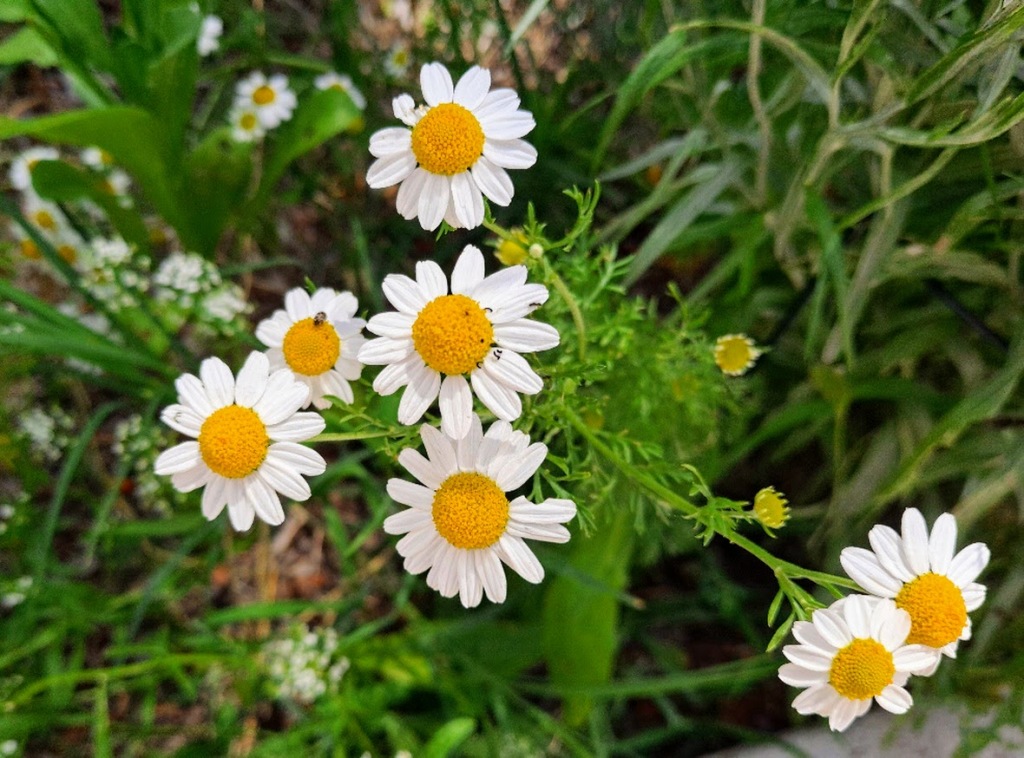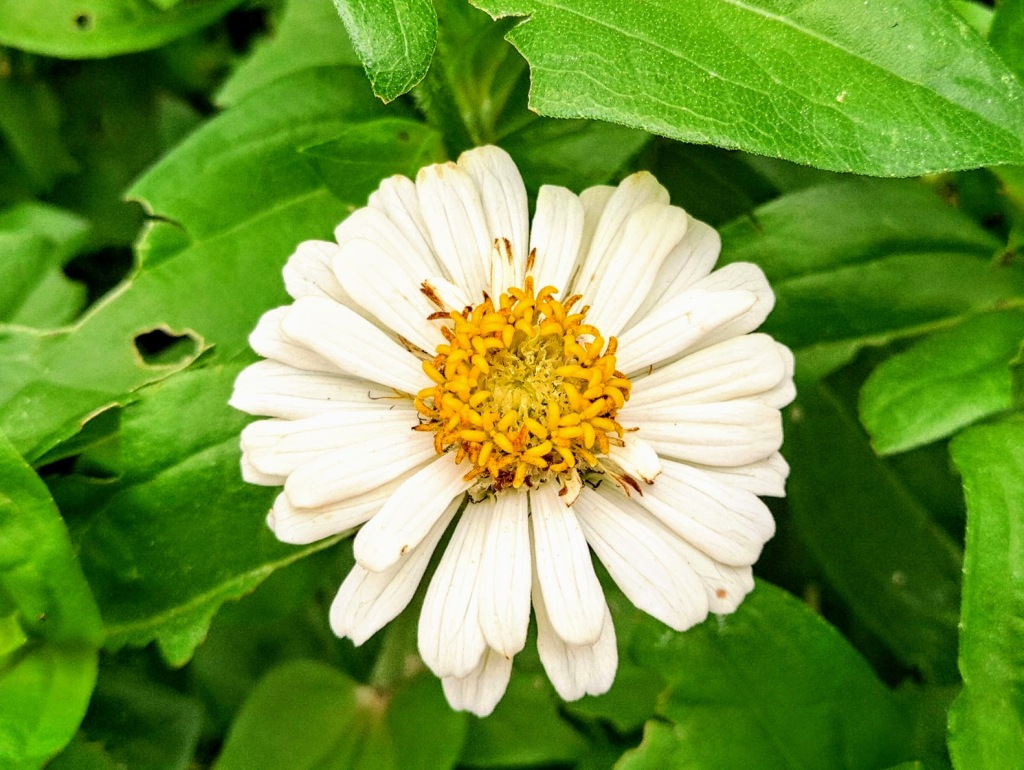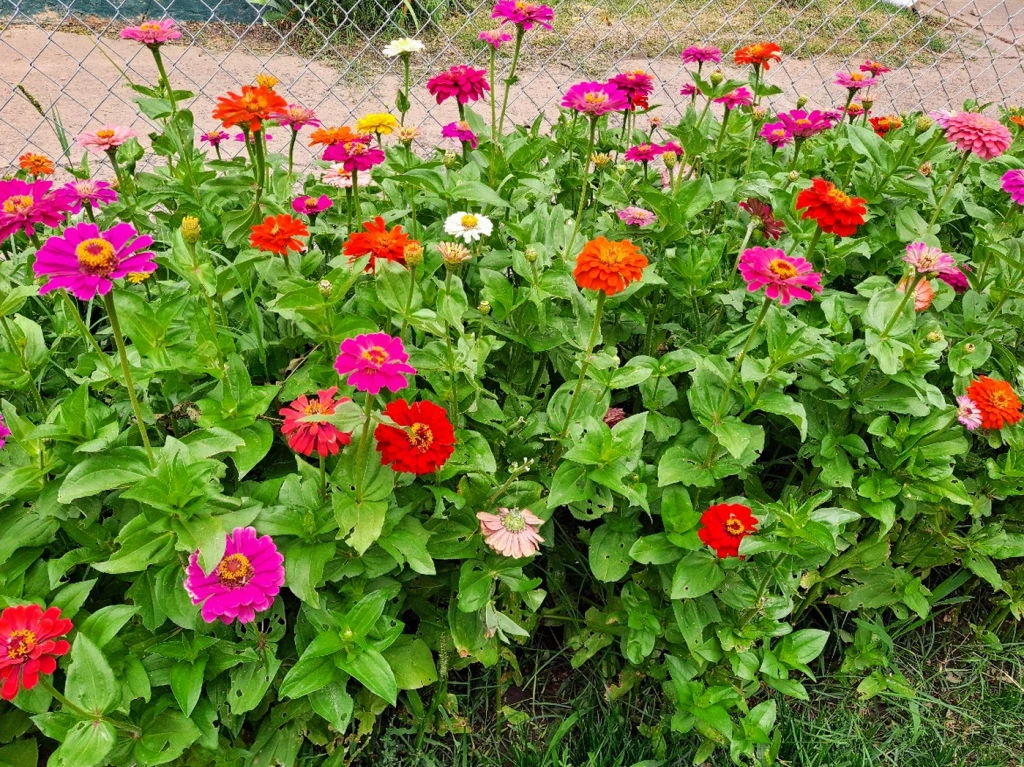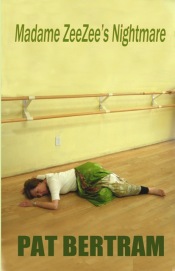For about three weeks, ever since my S.A.D. times passed, I’d been getting back into the feel of gardening. I’ve had more flowers this year than ever before, and they were doing well. I especially enjoyed the variation on a theme that was going on in my wildflower garden.
Daisies.
Cosmos.
Chamomile.
Zinnia.
I suppose it makes sense. All four of those flowers are members of the Asteraceae family, along with marigolds, sunflowers, dandelions, and lettuce.
Despite my ongoing frustration with trying to keep my lawn alive, I’d actually been having fun. I’ve been digging up a weed patch to extend my garden as well as digging up the swath were the grass died last year. I’d even cleaned up all the mess in the gravel and rock areas. (People always talk about ornamental rock as being a care-free landscape, but I find it even more troublesome than a lawn. I can’t use the leaf blower to blow the leaves and such off the gravel because the tool blows the rocks around rather than the leaves, and weeds are rampant because of all the rain we had this spring.)
And then came the night before last. Oh, my. Ferocious winds with a tornado-like swirl came charging in, bringing marble-size hail. Because of the swirling pattern, the storm hung around longer than such storms normally do.
When I got up the next morning, I was greeted by an immense mess. Plants were shredded, flowers destroyed, and the ground was covered with leaves and seeds and twigs from my neighbors’ trees. It was utterly heartbreaking.
At least, that’s what went through my mind at the time, but I quickly caught myself. Heartbreak was Jeff’s illness and his dying. Heartbreak was my brother’s struggles for mental stability and finally his death. Heartbreak was losing parents and friends and a way of life.
The damage to my yard was disappointing, of course, and frustrating. It’s also exhausting just thinking of all the cleanup work. But heartbreaking? No. In fact, I’m lucky — my house is fine and the windows are all intact, which can’t be said for everyone who endured the same storm.
On a rather ironic note, I’d been trying to figure out the best time to break up and transplant some of the clumps of daylilies. Apparently, the best time is whenever the flowers are finished blooming, and most of the flowers are gone now, the buds destroyed before they ever managed to bloom. Although I could transplant them now, it’s not a primary concern at the moment.
And on a happy note — the zinnias managed to survive quite nicely. A couple of flowers broke off, but the rest are growing cheerfully.
***
Pat Bertram is the author of Grief: The Inside Story – A Guide to Surviving the Loss of a Loved One. “Grief: The Inside Story is perfect and that is not hyperbole! It is exactly what folk who are grieving need to read.” –Leesa Healy, RN, GDAS GDAT, Emotional/Mental Health Therapist & Educator.
